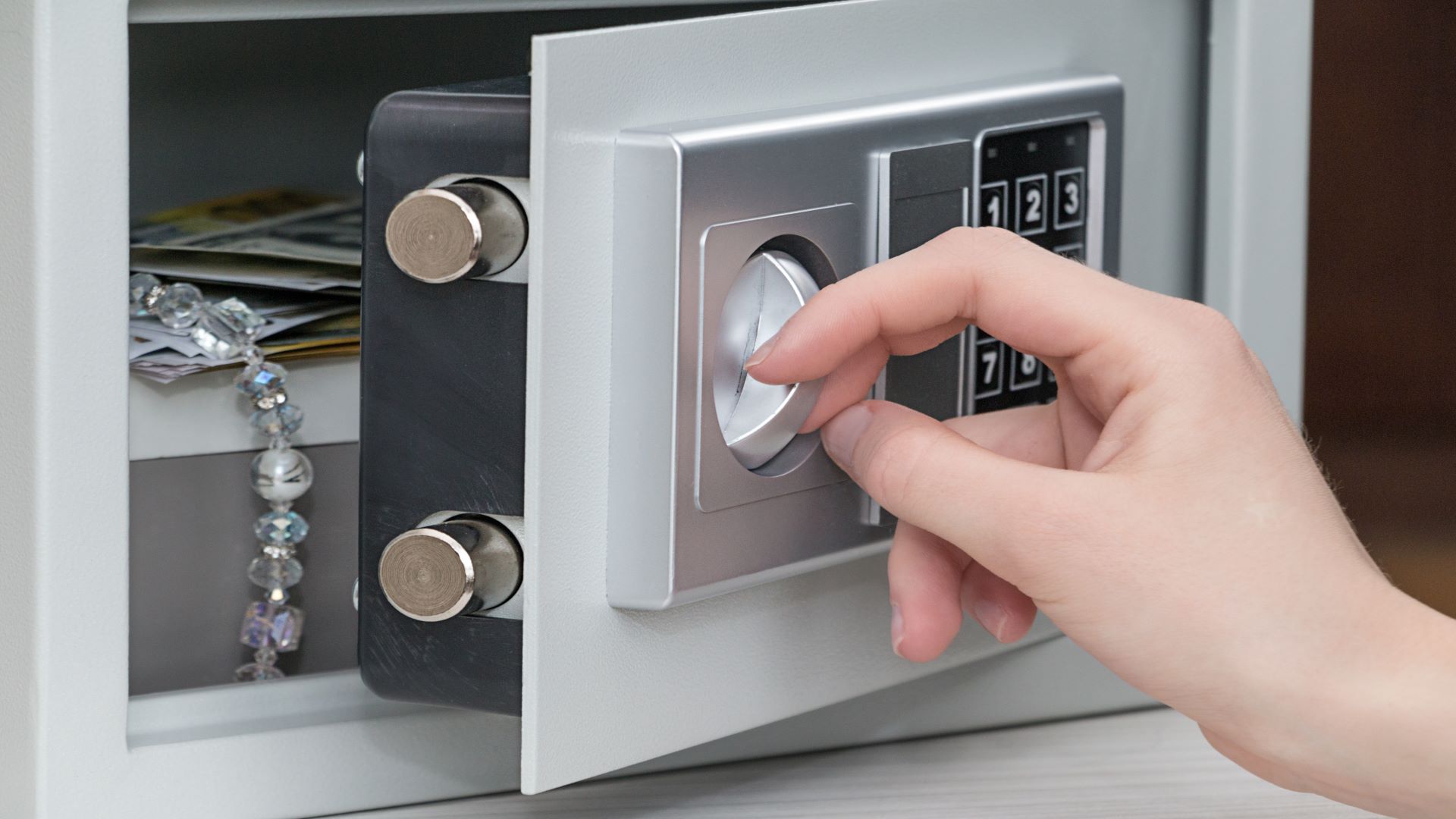Use a home safe to keep your possessions secure. Whether it’s cash, valuables, important documents, or jewelry, you want to protect them from burglars, fire, and water. Here are the best safe options for your home with a variety of locking mechanisms, sizes, and levels of fire resistance.
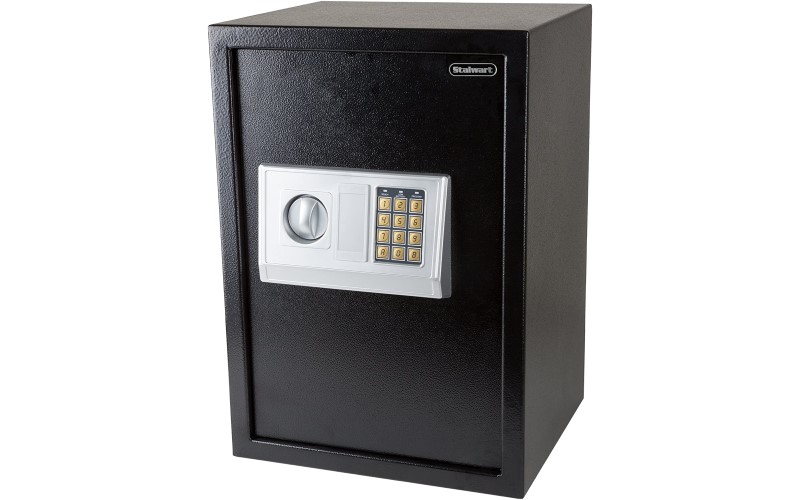
Stalwart Digital Safe
Loud alarm to deter thieves
This cabinet-style safe can stand on its own or can be wall-mounted depending on what you need. It stands just over 19-inches tall and is made from thick sheets of steel, so it’s hard to break in. It features a keypad lock system that you can program with a master code and with guest codes.
Pros:
- Program multiple codes
- Override keys
- Decent capacity
Cons:
- Batteries can be knocked out
If a code is incorrectly entered three times, a loud alarm will sound and will keep sounding for five minutes, or until you’re able to turn it off. The Stalwart Digital Safe does come with two override keys, just in case the codes or misplaced or forgotten. The buttons on the LCD keypad are large and easy to read and are powered with four AAA batteries. These batteries are placed in the door and can be knocked loose if the door of the safe is clsed too hard. This will result in your being unable to open the safe using your code, but you can still get in with the override keys.
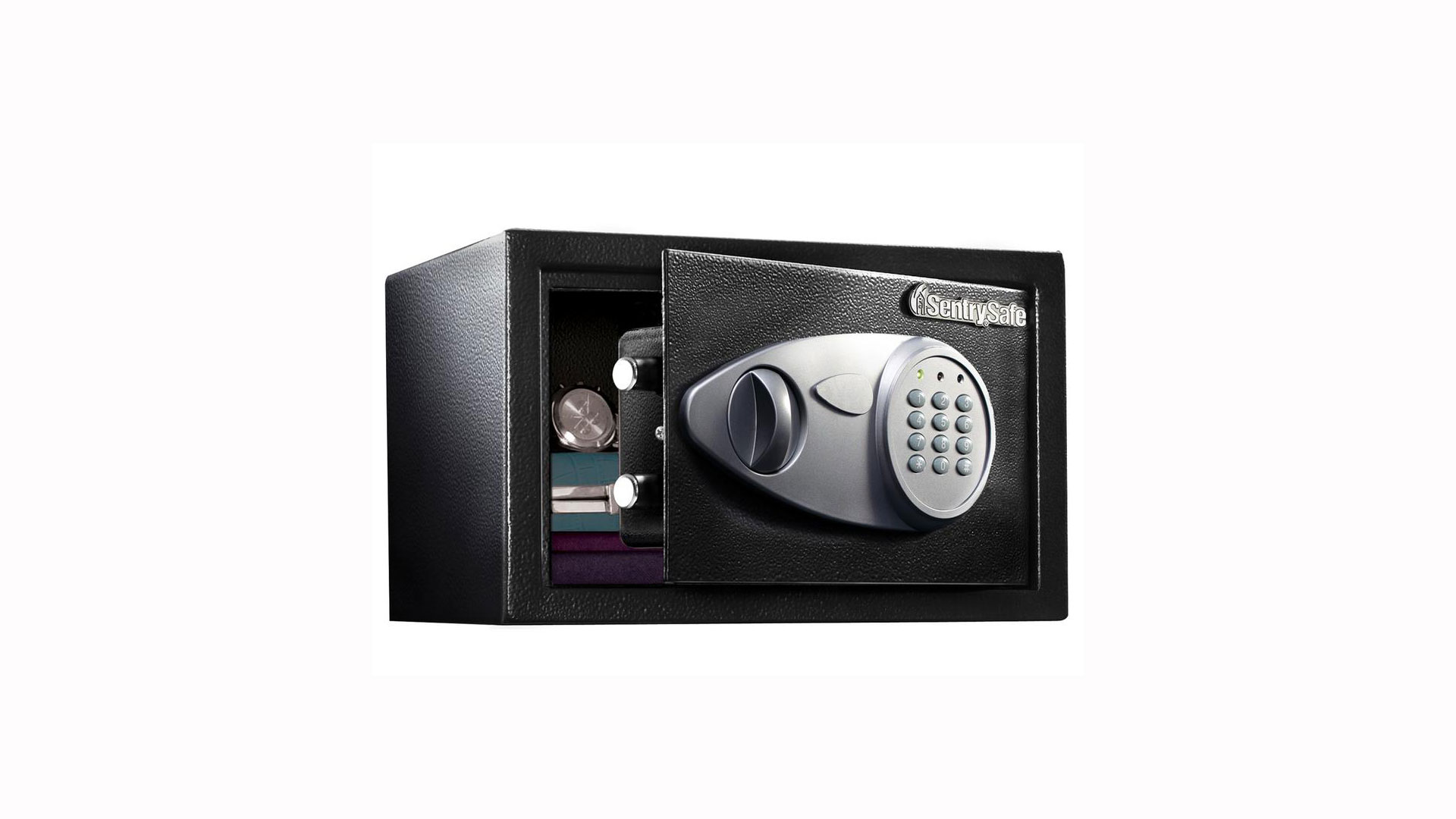
SentrySafe X055
Robust home safe
SentrySafe is perfect for storing jewelry, money, and small collectibles. The digital locking mechanism is controlled by a digital keypad, but two spare keys are included in case you forget your combination.
Pros:
- Digital lock
- Override keys
- Can be mounted
Cons:
- Not fireproof
The SentrySafe is made of strong steel alloy and can be bolted down with the included hardware. The California Department of Justice certifies this safe as a good option for storing small firearms, however, it isn't fireproof, so we don't recommned using it to store valuables that can be lost in a house fire.

Amazon Basics Fire Resistant Box Safe
UL certified
This home safe from Amazon Basics is made from 14-gauge stainless steel and will keep internal temperatures low for 20 minutes, long enough for your grab important documents or media during a fire. It features an adjustable shelf inside to make good use of the storage space.
Pros:
- Safety ceritification
- Fireproof
- Electronic lock and keypad
Cons:
- Not waterproof
The Amazon Basics home safe has a digital keypad for secured entry and a backup key. The handle is large and easy to turn and use to open the door. The safe comes with mounting holes predrilled so you can attach it to a wall or to a floor for further security. However, Amazon Basics doesn't include a way to seal these holes if you don't want it mounting making it easy for water to enter the safe during a flood.
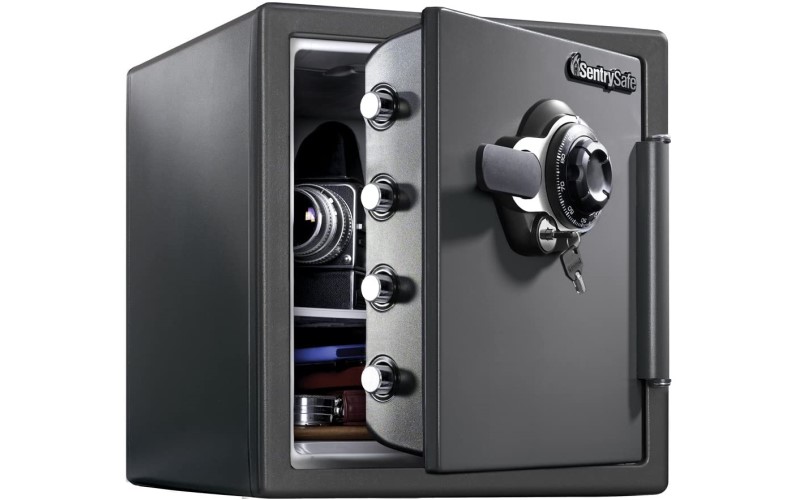
SentrySafe SFW123DSB
Ultimate protection
This heavy-duty home safe uses a traditional dial combination lock rather than a digital keypad. This means even without power you can get to your valuables. It does have a backup key. It features generous storage space and is waterproof and fireproof.
Pros:
- Combination lock
- Fire and water proof
- Withstands drops and falls
Cons:
- Heavy
- Expensive
This SentrySafe unit has been thoroughly tested by independent agencies that certify the safe will withstand high heat - up to 1700 degrees Fahrenheit, for up to an hour. It can also sit in 8 inches of water for up to 24 hours without anything inside getting ruined. It is so well built it can be dropped 15 feet and still won't open. Because it is so tough, this home safe is really heavy, so it isn't possible to grab it and go in an emergency. It is also more expensive than other safes, but it is more secure and is UL certified, which isn't common for small home safes.
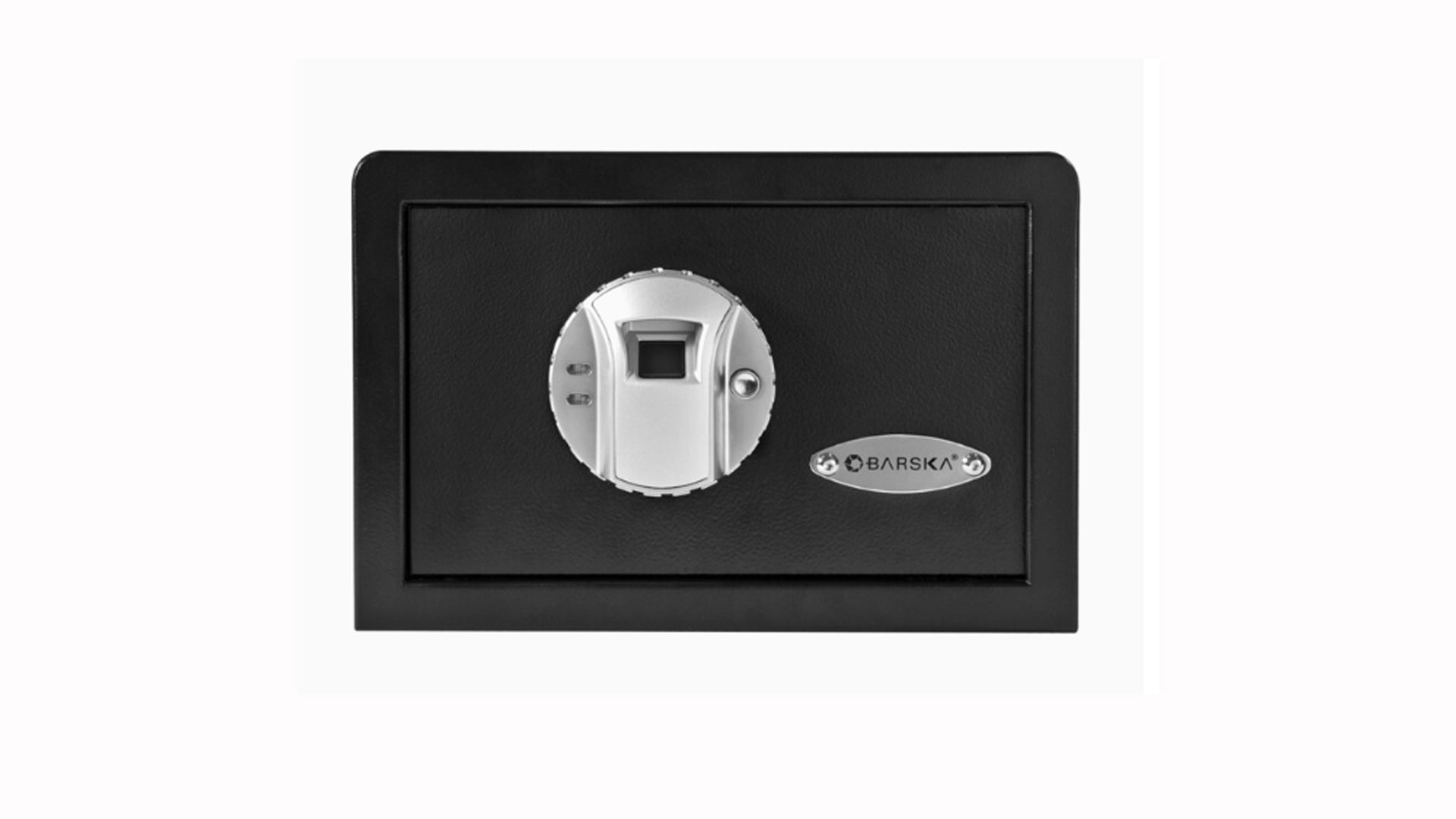
BARSKA Biometric Home Safe
Uses fingerprint technology
The BARSKA safe can be unlocked using a built-in fingerprint scanner, which is able to store up to 30 fingerprint patterns. This means you don't have to worry about remembering passwords. It does come with backup keys in case the fingerprint scanner's battery dies or stops working.
Pros:
- Fingerprint locking mechanism
- Lightweight
Cons:
- Not fire-resistant
- Not water-resistant
- Too small for some uses
This durable safe has two strong steel bolts that secure the door using a motorized locking mechanism, and the body is composed of high-integrity steel. This safe is small and lightweight, weighing only 12 pounds. The interior dimension isn't very large but it is ideal for small items such as passports and jewelry. The BARSKA safe is neither fire-resistant nor waterproof, so it won't protect valuables from flooding or fire.
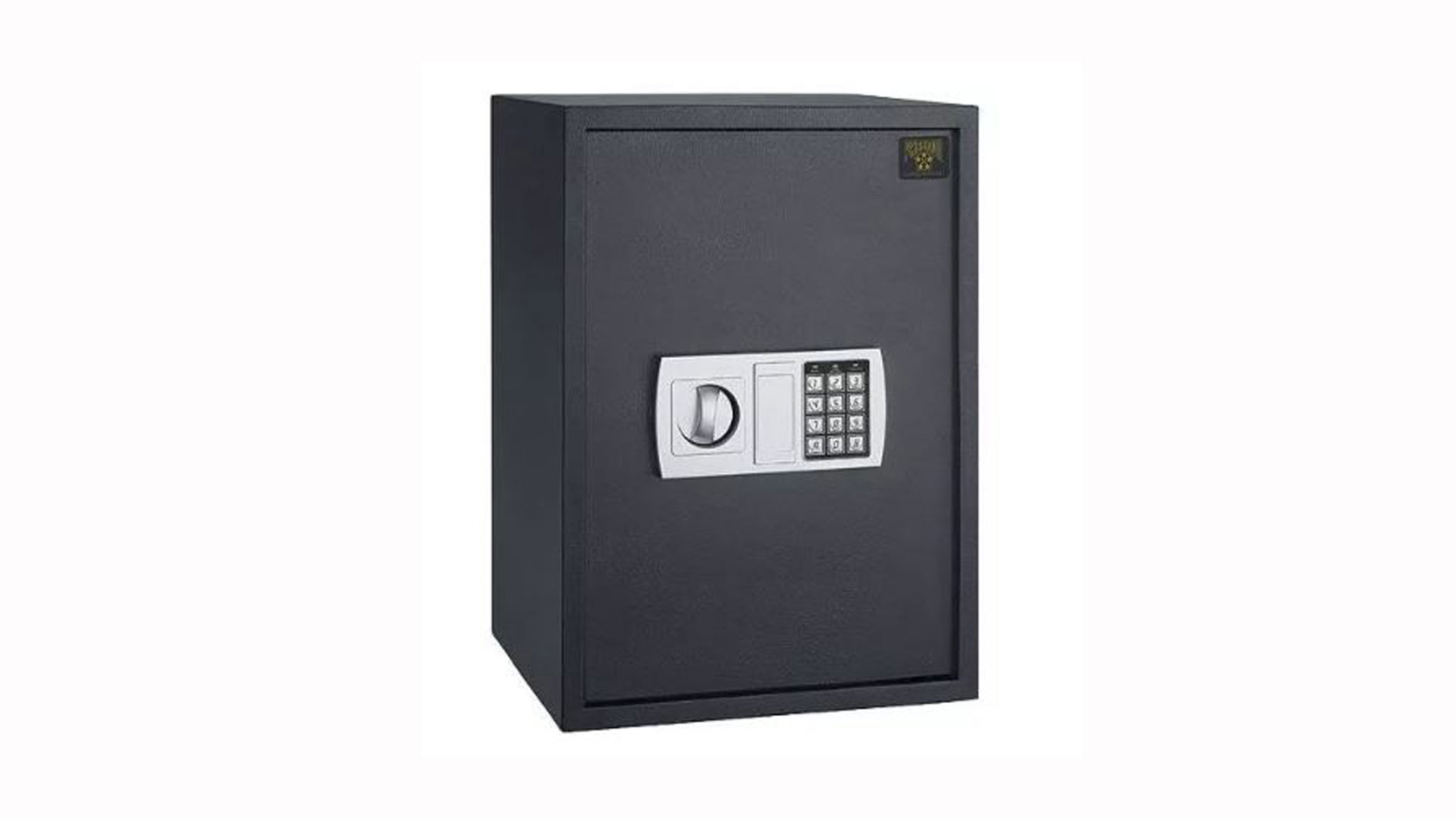
Paragon 7775 Large Electronic Digital Safe
Solid steel build
The Paragon 7775 is made with thick, 11-gauge solid steel to resist hand and mechanical tool attacks. The hinges are tamper-proof and located on the inside of the door. The interior floor has carpet padding to reduce scratching of valuables while a small shelf makes better use of the storage space.
Pros:
- Built well
- Internal hinges
- Interior carpeting
Cons:
- Not waterproof or fire-resistant
This safe stands nearly two feet tall and can be bolted to a floor or wall for added security. The digital keypad is battery powered and you can change your password an infinite number of times. Fortunately, spare keys are included in case you forget your passcode. While the Paragon home safe is built tough, it is not fire-resistant or waterproof.
Getting the best safe for your home
Why you can trust Top Ten Reviews Our expert reviewers spend hours testing and comparing products and services so you can choose the best for you. Find out more about how we test.
Before choosing the best home safe for you, we would recommend deciding on where you would store your home safe, what you want to store, and what level of safety you require. A handful of safes on the US market today are specifically made for particular items. Also, think about which type of safe access would best suit you. Do you want a simple lock and key method? Or would you rather have a digital number pad you enter a code into? You’ll find some home safes including models that have fingerprint recognition. This provides your home safe with an extra form of security.
As with many things, the more money you spend on a safe will dictate the workmanship, materials it’s made out of, and often, its quality. This is particularly relevant if you want a safe that is fire-resistant, made from more heavy-duty materials, or has pry-resistant hinges.
Burglary resistant safe
If you are serious about protecting your valuables against burglary, you should consider a safe that is UL-listed for that purpose. Underwriters Laboratories ratings reflect the construction quality of a safe and are based on how long it would take a burglar to force it open. The minimum level of protection and lowest rating, Residential Security Container, is not really considered safe as it means the container only resists weak attacks for five minutes and is relatively easy to break into. However, UL's other ratings, UL TL-15 and UL TL-30 mean the safe can withstand strong attacks, including power tools, for 15 and 30 minutes respectively.
Most safes you can buy online or in retail stores don't provide much resistance against burglars, though Tarsila Wey from First Alert suggests safes with programmable digital locks and concealed pry-resistant hinges offer more security than those that don’t. Storing your valuables in a home safe does at least discourage impulse and opportunity thefts. For the security of major assets, however, we recommend visiting a locksmith or a store that specializes in safes or getting a lockbox at your bank.
Fire-resistant safes
If protecting key documents from fire is your main concern, get a model that has been UL classified for fire resistance. In order to earn a UL classification, a safe must keep an internal temperature below 350 degrees Fahrenheit for one hour, even if the outside temperature reaches 1,700 degrees. Safes that last two hours at 1,850 degrees earn a higher rating. Many cheap fire chests are UL classified for 30 minutes at 1,550 degrees.
“Many of today’s safes are capable of providing both fire resistance and effective burglary protection,” Tarsila Wey told us in our interview. Of course, if you want a safe that is both fire- and burglar-resistant, you should expect to spend more.
Locking mechanism of the safe
Some safes have one basic locking device, while others are equipped with as many as four, such as basic key entry, combination dial entry, digital combination pad entry, and fingerprint recognition entry. While it's important to choose a lock style that best fits your needs and preferences, each lock type has weaknesses. For example, digital locks have trouble if the batteries die, and burglars can force the lock using the slot for the backup key. Likewise, manual locks can be susceptible to lock picking. Remember, if a safe has a UL listing for burglary resistance, its lock will reflect that.
How we evaluated home safes
We aren't able to conduct home safe testing in our lab because we lack the facilities to adequately and safely assess each product's resistance to physical attacks, fire, and water damage. While these destructive testing methods may be useful in gauging each product's effectiveness, we don't think they would reveal much more than UL classifications and manufacturer specifications.
While we consider UL-listed safes to be superior to unlisted models, we also recognize that most of the popular models you can buy online fall into the latter group as they are more affordable. As such, the safes we chose to evaluate only have the most basic level of security, which is better than none at all.
Because of this, we don't score the safes in our review, though we still conduct thorough research to help you decide which brand or type of safe is best for your needs. Our recommendations stick to models that work for most homeowners but may not be large enough or offer the best features of an all-in-one safe. For more secure, full-featured models, we suggest speaking with a seller in your area specializing in safes.
We've tested a variety of products in-house at Top Ten Reviews, such as smartphones, DIY home security systems, and other equipment. However, practicality prevents us from testing some products, such as home safes, firsthand. As such, we rely on our experience, research, and interviews with industry experts to advise you in choosing the home safe that fits your needs while highlighting notable products from popular brands.
We studied information about burglary and fire-resistance classifications for safes as defined by Underwriters Laboratories. Additionally, we found extremely helpful guides from American Security Products on both burglary and fire ratings. We also contacted Tarsila Wey, the director of marketing at First Alert, and asked about homeowners’ reasons to buy safes and some tips for choosing a good safe.
Why trust us?
At Top Ten Reviews, we recommend the best products to enhance your life. As experts, we handpick products based on quality and usefulness to positively impact your life. We take our responsibility seriously — testing products, reading reviews, and sourcing knowledgeable outlets to ensure our selections are worthy of your time and money. Our detailed product overviews balance objective information with subjective opinions, so making the best choice for your home and lifestyle is easy.
